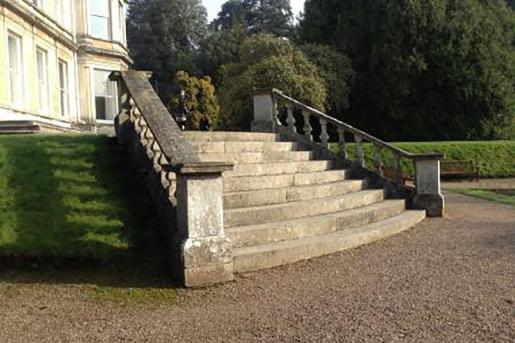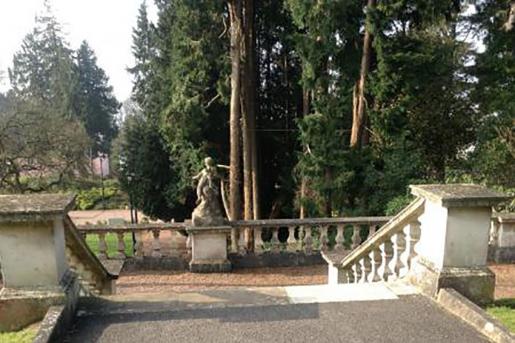- Gardens
Reed Hall, formerly known as Streatham Hall, is an Italianate mansion which was built for Richard Thornton West in 1867 and is now incorporated within the site of the University of Exeter. The impressive Italianate terrace gardens lead to the extensive collection of specimen trees and shrubs planted by the Robert Veitch nurseries that flourished in Exeter at that time. The sale particulars of 1903 provide extensive details of the planting of the pleasure grounds. It claimed that ‘the mansion is surrounded by most beautiful pleasure grounds arranged in terraces and including an exquisite Italian garden, with lake and superb conservatory and palm house. There are extensive fruit and vegetable gardens and complete range of glass . . . The Builder and Gardener have manifestly worked hand-in-hand and, under the mellowing effects of time, nature has perfected in her generous way the original design.’ Surviving garden features also include the pinetum and ornamental pond with fountains. The Palm House was removed to the Imperial Hotel in Exeter. The grounds are open to the public.
The designed landscape of the Streatham Estate of Exeter University survives essentially intact and is a good representative example of a landscape laid out by a designer of national repute in association with an architects of national repute. It is advised that the historic designed landscape is of significance in the national context, and it is therefore recommended for inclusion on the Historic England Register of Parks and Gardens of Special Historic Interest at grade II.
Reed Hall and the series of steps with handrail supported on balusters all listed Grade II.
Cherry & Pevsner: The Buildings of England – Devon, 1989: 403-7
S Pugsley: Devon Gardens – An Historical Survey, 1994: 15-16, 177
T Gray: The Garden History of Devon, 1995: 189-91,190.
Country Life v.125,1959: 1002-03; v.158, 1975: 1748-49; v.159, 1976: 1045
Gardeners’ Chronicle v.160 no.9, 1966: 14-15
Grounds and Gardens of the University of Exeter, 1969
International Dendrology Society Year Book, 1971: 8-13; 1972: 13-17; 1973: 52-56


